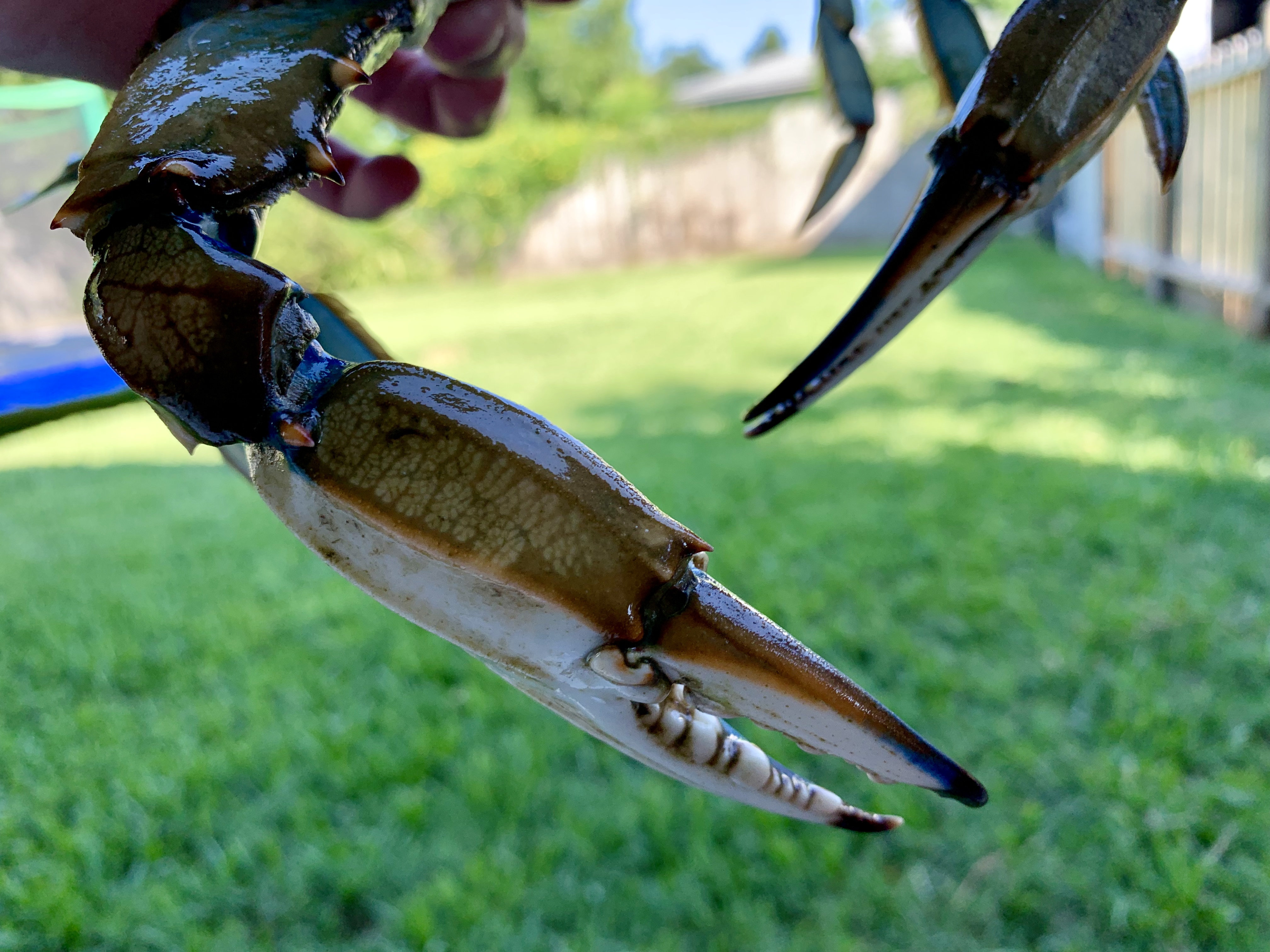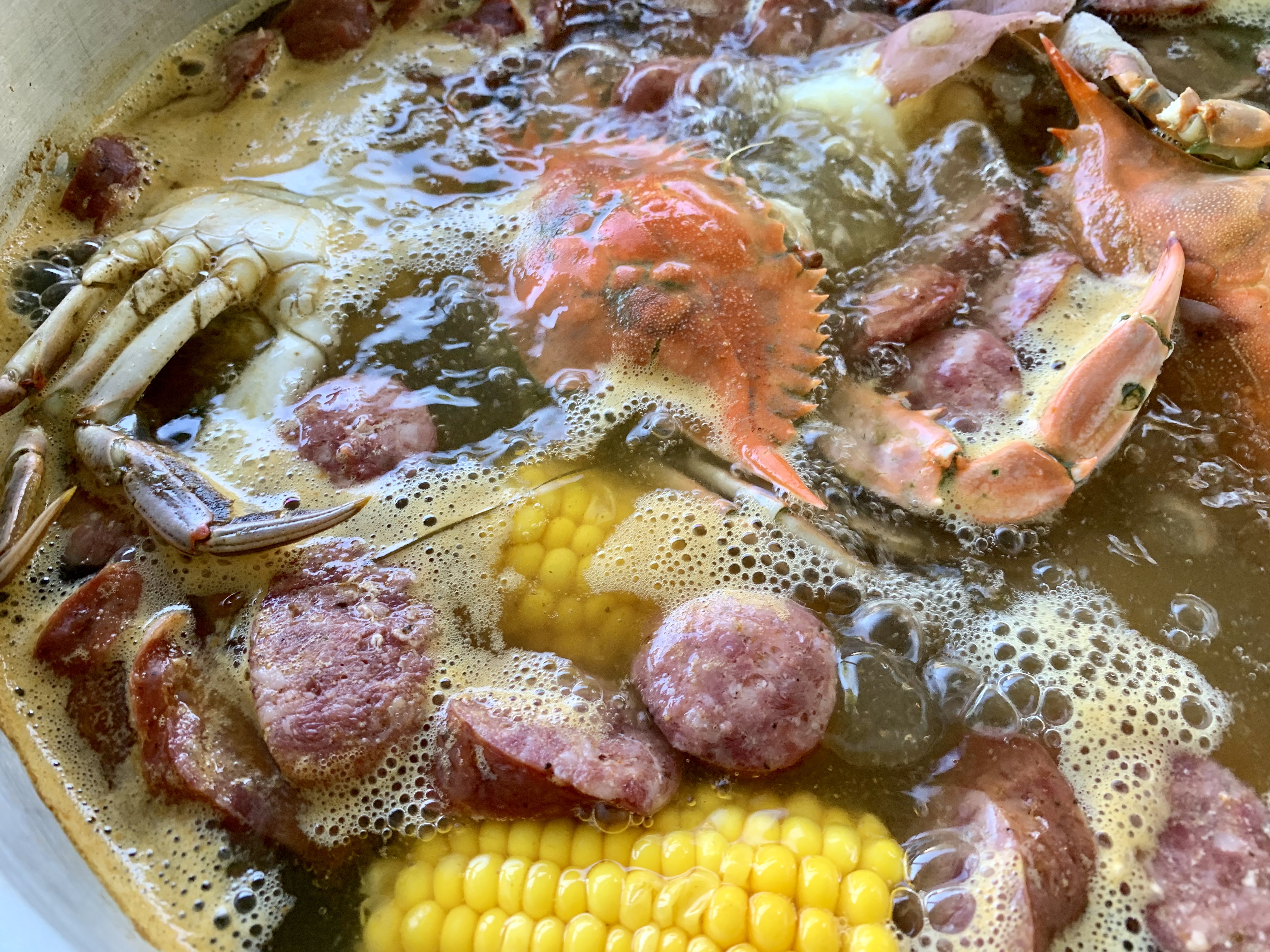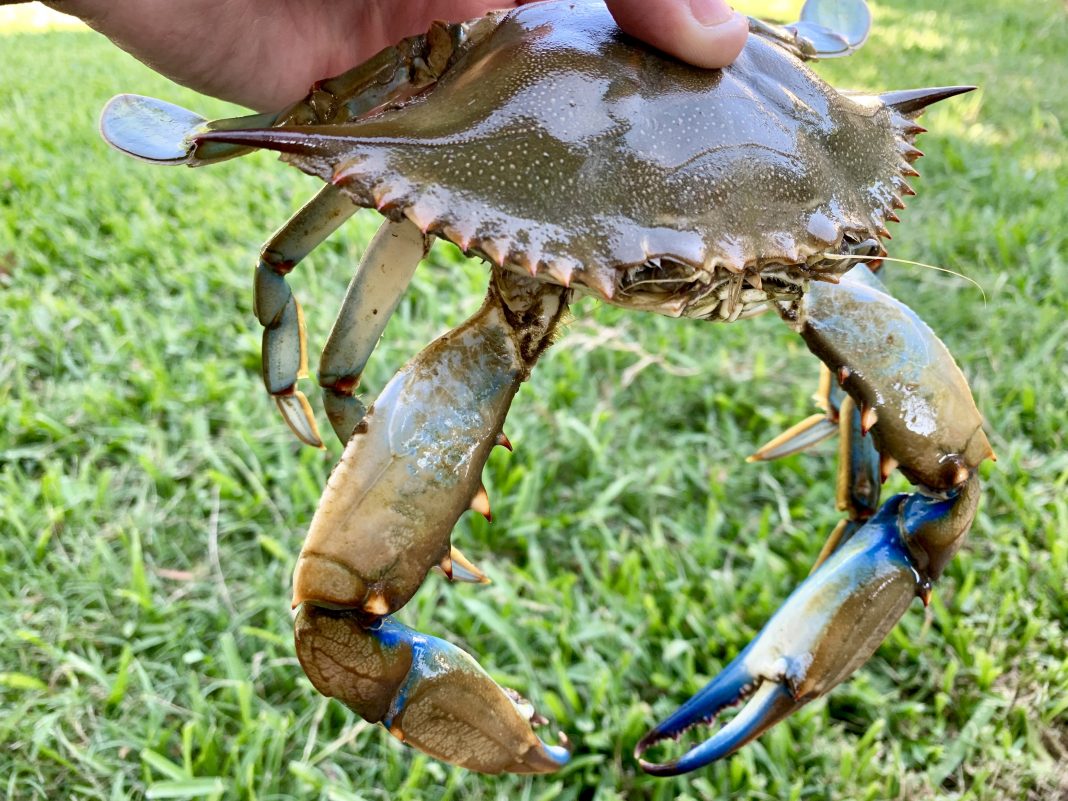Crabbing is a summertime staple up and down the Texas coast.
And a tasty one, too.
The pursuit is geared toward simplicity and many of the most productive crabbing locales are accessible from shore. There also is little investment in gear you must tote along to have an enjoyable outing, and in that regard it’s an everyman’s recreational opportunity.

Blue crabs typically lurk near sandy bottoms lined with sea grass and usually are found in bay systems. They have blue claws, dark backs and white underbellies. Stone crabs, which are brownish-red and have a larger right claw, typically prefer rocky structure such as jetties that protrude into the Gulf. A blue crab’s diet differs from freshly dead to freshly caught food, including small bait fish. Crabs also will eat each other and the stone crab’s powerful larger claw can be used to crush the shells of crabs, oysters and other mollusks.
Some of the best crab habitat is nestled close to manmade structure near shore, including around boat docks, marinas, bulkheads, piers and especially bait stands or fish-cleaning tables, where scraps always get scooped up quickly. Other places to seek out include brackish areas and estuaries that harbor a number of different food sources.
Crabs may be harvested for food or bait with a valid fishing license and a saltwater fishing stamp endorsement, but those taken for personal use may not be sold. There are no public waters, seasons or times closed to crab harvesting other than during abandoned crab trap removal program dates. That program, which celebrated its 20th year in 2020, closed bays to crabbing for a week in February, and traps in the water during that period were fair game to be legally removed.
There is no daily bag or possession limit for blue crabs and stone crabs, but they each must meet a minimum criteria to be taken. The legal size at which a blue crab may be harvested is when it measures 5 inches across the widest point of its body, from tip to tip of its spines.
A legal stone crab is defined as one with at least a 2½-inch claw, measured from the tip of the claw to the first joint behind the immovable claw. The larger claw is the only portion that may be retained and you must return the body of the crab to where it was caught. The crab’s claw will regenerate, typically within a year, according to the Texas Parks and Wildlife Department.
The sex of a blue crab can be determined by the abdominal flap or “apron,” which in males is shaped like an inverted T and in females is broader. Spawning season runs from December to October and peaks during spring and summer. When carrying eggs, females are termed “sponge” or “berry” crabs and are illegal to be retained. Female crabs with aprons removed also are illegal to be possessed.
Crabbing devices are varied and feature some restrictions.
The simplest legal device is a throw line — a baited line without a hook — which has no restrictions. You can tie whatever smelly lure you prefer onto a piece of strong twine that’s long enough to reach the bottom and drop it from a pier or the bank. When a hungry crab latches on, slowly retrieve the line until you see it and then use a net to scoop it up and place it in a bucket.
Another common way to fish for crabs by hand is to use a crab net, which is termed an umbrella net by TPWD. It features two rings attached by mesh with the larger top hoop attached to a pull line, and when baited and dropped to the bottom, the device folds flat. This allows crabs to find your bait and when you feel them or see the line move you simply lift on the pull line and scoop up your quarry. The restriction on these nets is they may not have within the frame any area that exceeds 16 square feet, according to TPWD.
The most common set gear is the crab trap, which is a rectangular device typically made of chicken wire or other thin metal that can be baited and left to sit. The trap, which may not exceed 18 cubic feet, has inverted funnels on its sides that allow crabs to enter but makes it difficult to escape. Each trap must have two escape vents measuring at least 2 3/8 inches in diameter in each crab-retaining chamber. The trap also must have a degradable panel, a 3-by-6-inch or larger door attached by twine or wire that will deteriorate quickly, which allows crabs to escape if the trap isn’t emptied in a timely manner.
Only six traps at a time may be used for non-commercial purposes and crabs and traps may only be removed from the water from 30 minutes before sunrise to 30 minutes after sunset, according to TPWD. Crab traps must be used with a valid gear tag that contains the name and address of the person using it and each trap must be marked with a white buoy featuring a contrasting stripe and measuring at least 6 inches high, 6 inches long and 6 inches wide. Plastic bottles of any variety are not legal to use as buoys or floats and crab traps may not be placed closer than 100 feet together except when they are secured to a pier or dock.
Baiting a trap or line is cheap and easy, and can be done with any type of sturdy meat and bone such as chicken necks or pig’s feet.
Once you’ve caught a mess of crabs, you should either keep them in a bucket with a little bit of water or keep them on ice. They should be cooked as soon as possible and you should get rid of any crabs that are dead before you cook them.
Crabbing is an excellent way to share the outdoors experience with young and old, especially when you’re successful. It’s also rewarding when your efforts take shape as you sit down at the dinner table.
Cleaning and picking crabs
Cleaning and picking a crab isn’t a quick process, but your efforts will be rewarded.
There are specially designed “crab knives” but the easiest implements that you may already have are a butter knife and an oyster fork.
Cooking crabs is an easy process. Simply bring a large pot of water to a boil and flavor it with some type of seafood boil seasoning, which can be found in mass quantities at your local grocery store. If you don’t have an adequate pot you can boil your crabs in batches. Once you’ve placed the crabs in the water it shouldn’t take long for them to cook and once they start floating you know that you’re close to perfection. The crabs that once were blue should be a dark red color when they’re ready for the table.

After you’ve boiled your crabs and set up a table with layers of newspaper simply dump them in a pile for everyone to enjoy and dig in. Remove the claws first and then twist off the other legs, which sometimes will bring meat on them. Next, flip the crab over and remove the apron by inserting the tip of the knife into it and pulling it back, and then turn the crab over and take off the top of the shell. You should see gills and other innards, which you can clean away with a knife or even a finger.
Next, take what’s left and snap it in two, which will reveal the meat. You can use the knife and small fork to clear away the meat from the shell, but sometimes it’s easier to simply use your fingers. Once you’ve finished picking whatever looks edible, turn your attention to the claws. You can use a small mallet to crack them, but the handle of the butter knife works as well.
There’s no finer thing than enjoying a mess of blue crabs on a summer evening. Unless you’re lucky enough to have leftovers for lunch the next day!



















Great article for Texans. I am from Maryland, but lived in Texas for 20 years, and would never allow a blue crab to be boiled. Crabs are best when steamed with a heavy coating of course salt and seafood seasoning. Best part of being in Texas, is getting live blue crabs!
Always steam your crabs for the best flavor. boiling them will cause the meat to become mushy and lose its flavor.
Maryland/ Chesapeake bay transplant.
thanks for the great tip
Interesting. From the comments here no one knows how to actually boil blue Crab correctly. Boiling does not make them mushy or lose flavor. In fact, if you open a mushy crab then it’s likely to have died before preparing. I’ve seen mushy crab that have been steamed. As for flavor, if the temperature of the water is correct (210 degree rolling boil) you can add seasoning to it and place live crab into the water. They should be put to sleep first (in the refer) for 15mins before placing them in the water (they will keep their claws). The Crab will instinctively inhale the seasoned water and the meat will be seasoned after 25 mins or so. I have done this for 20 plus years being from DC/MD. I add my creole seasoning with a mixture of a Maryland crab boil. So good people would come by my house on the weekends to buy bushels. Did that for three seasons. Never had a complaint. I recently moved to Dallas and will have them shipped. Preparing my Crab is the best joy in life. Great article.
Phil,
Right on. My family is from Galveston and goes back at least 7 generations. We boiled all of our crabs with Shrimp/Crab boil seasoning and they were always delicious. Steaming is an east coast thing.
Totally agree. I’m a Seafood lover and I boil my crabs. I’ll be in Texas city or Galveston Saturday crabbing.
[…] Crabbing along Texas coast geared toward simplicity, fun, food […]
My mother deep fried our crab. I think she removed the claws and boiled the claws. How’s that for different.
[…] the whole family in on the fun! Find & catch blue crabs hanging out in the bays and mud flats on the north side of the […]